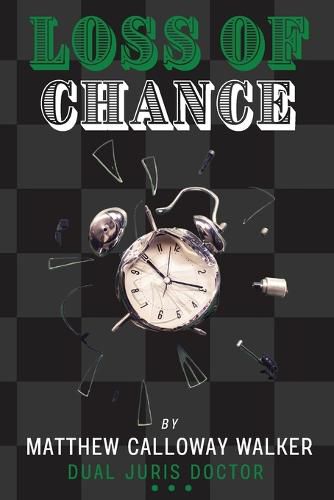Readings Newsletter
Become a Readings Member to make your shopping experience even easier.
Sign in or sign up for free!
You’re not far away from qualifying for FREE standard shipping within Australia
You’ve qualified for FREE standard shipping within Australia
The cart is loading…






This title is printed to order. This book may have been self-published. If so, we cannot guarantee the quality of the content. In the main most books will have gone through the editing process however some may not. We therefore suggest that you be aware of this before ordering this book. If in doubt check either the author or publisher’s details as we are unable to accept any returns unless they are faulty. Please contact us if you have any questions.
"This is the work of a masterful scholar and writer, who has a deep appreciation for law and medicine, and the core-competencies to back it up. By far, Matthew's account provides a detailed innovative approach that could have a revolutionary impact on the way the judicial system tackles medical malpractice and the loss of chance doctrine." -- Dr. Stephen Glazer, MD FRCPC FCCP.
With every diagnosis given and every treatment prescribed, patients find themselves confined to operate on a metaphorical chess-board encumbered by statistics. There is virtually no liberation. "How long do I have?" "Is it fatal?" "What are my options?" "What is my chance of survival?" These are the quintessential queries which preoccupy and burden the mind. For any given patient, diagnosis and prognosis offer insight and to some extent clarity. Unfortunately, this reality is oftnever realized when patients are subjected to negligent misdiagnosis. Under the shroud of wrongful error, the patient loses a statistical advantage pertaining to their survival or recovery. Consideration of this loss of chance as compensable at lawhas sparked prodigious debate amongst legal scholars and judicial decision makers spanning the globe. However, as medical malpractice actions in some countries have seen a decline in patient claim success over the past 40 years, many have argued a new judicial approach is needed. One approach offered is to utilize the loss of chance doctrine. What is it? How does it work? What is the Walker Approach? These answers and more await you inside this book.
$9.00 standard shipping within Australia
FREE standard shipping within Australia for orders over $100.00
Express & International shipping calculated at checkout
This title is printed to order. This book may have been self-published. If so, we cannot guarantee the quality of the content. In the main most books will have gone through the editing process however some may not. We therefore suggest that you be aware of this before ordering this book. If in doubt check either the author or publisher’s details as we are unable to accept any returns unless they are faulty. Please contact us if you have any questions.
"This is the work of a masterful scholar and writer, who has a deep appreciation for law and medicine, and the core-competencies to back it up. By far, Matthew's account provides a detailed innovative approach that could have a revolutionary impact on the way the judicial system tackles medical malpractice and the loss of chance doctrine." -- Dr. Stephen Glazer, MD FRCPC FCCP.
With every diagnosis given and every treatment prescribed, patients find themselves confined to operate on a metaphorical chess-board encumbered by statistics. There is virtually no liberation. "How long do I have?" "Is it fatal?" "What are my options?" "What is my chance of survival?" These are the quintessential queries which preoccupy and burden the mind. For any given patient, diagnosis and prognosis offer insight and to some extent clarity. Unfortunately, this reality is oftnever realized when patients are subjected to negligent misdiagnosis. Under the shroud of wrongful error, the patient loses a statistical advantage pertaining to their survival or recovery. Consideration of this loss of chance as compensable at lawhas sparked prodigious debate amongst legal scholars and judicial decision makers spanning the globe. However, as medical malpractice actions in some countries have seen a decline in patient claim success over the past 40 years, many have argued a new judicial approach is needed. One approach offered is to utilize the loss of chance doctrine. What is it? How does it work? What is the Walker Approach? These answers and more await you inside this book.